Our visit to the wonderful Calderstones Park was to see some specific trees for their leaves or flowers in May, but we were also delighted to see the magnificent Rhododendron and Azalea walk at its best.
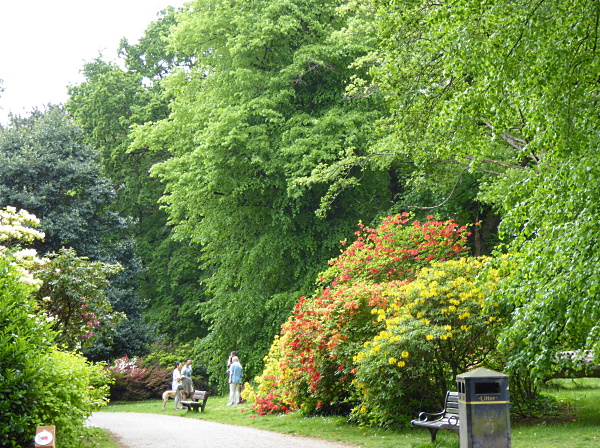
There is an unusual maple tree at the Ballantrae Road entrance. It’s definitely some sort of Acer because the winged “helicopter” seeds are developing, but the leaves aren’t sycamoreish at all, and the bark has coloured stripes. I think it might be Grey-budded Snakebark Maple Acer rufinerve. Mitchell’s tree book says a snake-bark maple with grey and pink bark is always this species. There is another one with the same bark and leaves near the walled garden.
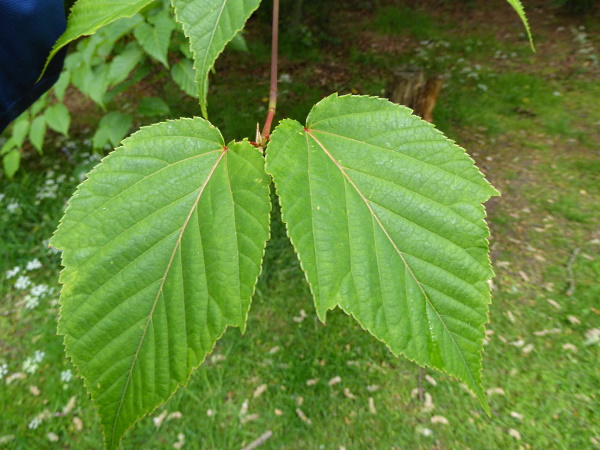

On the corner of the Text Garden is a Dove or Pocket-Handkerchief tree, which only blooms at this time of year, and which some people travel miles to see. Below it is a carpet of Wild Garlic and Three-cornered Leek.
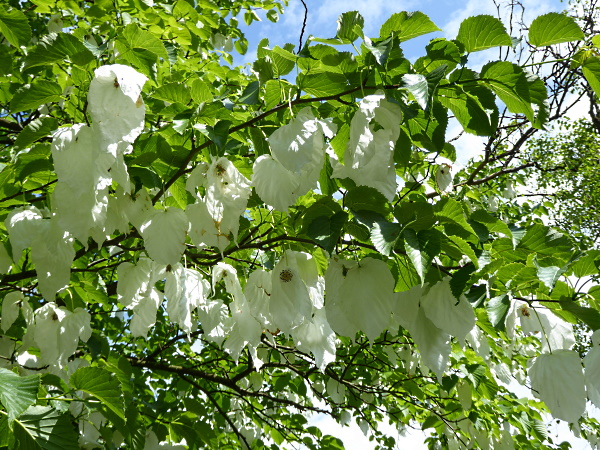
In the old Rose Garden was a small Judas tree in flower, which we appreciated, but we were really looking for the young, very rare Pecan nut tree Carya illinoinensis. We spotted it last autumn as a new sapling with a nursery label, otherwise we’d have had no idea what it was. Unfortunately we didn’t make a careful note of exactly which young sapling it was, and there were two possibilities, both with the required pinnate leaves. Was it the bigger flourishing one or was it the weedy one? I think it was the weedy one, as Google Images shows yellowish new leaves on the ones in America.
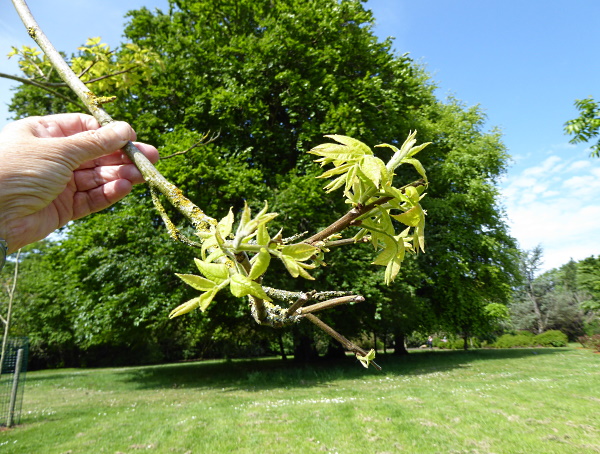
Then we went to look at the Golden Rain tree, the main purpose of our visit today. A couple of tree-book authors have been almost rapturous about the new foliage. Mitchell says “unfolding dark red in late May …” while Paul Wood in London’s Street Trees gushes “… delicate rose- and bronze-tinted foliage emerges to compete with cherry blossom.” We were disappointed to see that although some new leaves were a bit salmony or bronzy, the tree definitely wasn’t pink all over. We hadn’t missed it: Margaret has scouted the tree a couple of times since early spring but she didn’t find it pink all over at any stage. This picture is of the one near the Calder Stones, showing some pinkish shoots, but nothing to match our expectations.
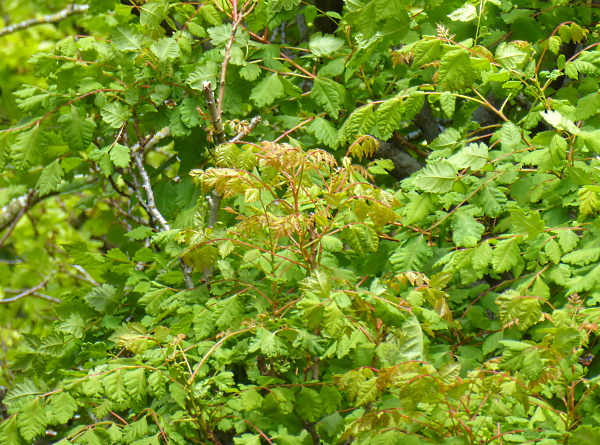
We found ourselves by the gate to the nature reserve area, which is still under development. That side of the park was originally an adjoining gentleman’s estate, Harthill. Liverpool Council bought it in 1914 as an addition to the park and to prevent any “speculative builder” from buying it. From 1964 to 1984 it was the site of famous greenhouses containing a nationally important orchid collection as well as the plants for Liverpool parks. Derek Hatton had them all demolished, and the orchids were dispersed. The area was used as a green waste recycling centre until the Council decided to sell the area for housing development, in direct contradiction to the purpose of buying it in the first place. The Friends of Harthill and Calderstones Park protested vigorously, raised money and eventually forced and won a Judicial Review, keeping the land as part of the park. Now a group of volunteers is working to turn the area into a nature reserve, which is scheduled to open this summer.
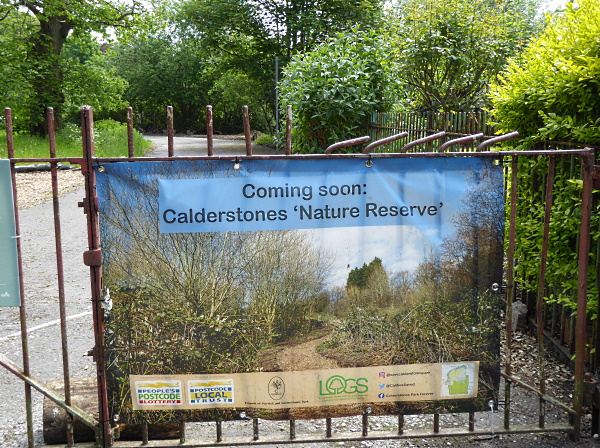
Dotted around the park are several Chusan Palms, Trachycarpus fortunei. From the growing tops some were producing the most peculiar curved yellow structures, like fat triangular bananas or bent corns on the cob. It seems that Chusan Palms are dioecius, with separate male and female plants. What we saw were the emerging flowers of the male tree. How weird they are.
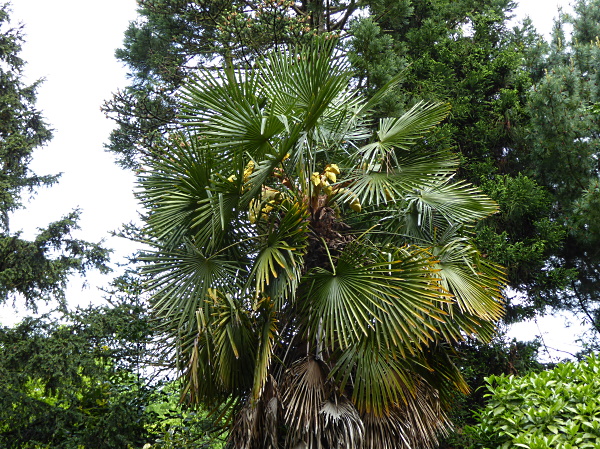
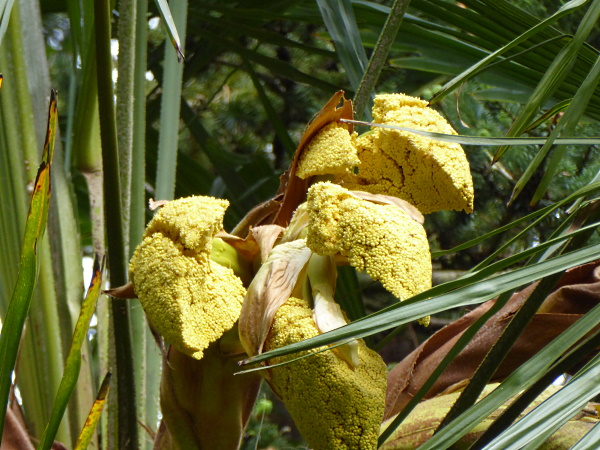
In preparation for the Jubilee someone has been crocheting red-white-and-blue bunting and a wreath for the railings of the Mansion House.
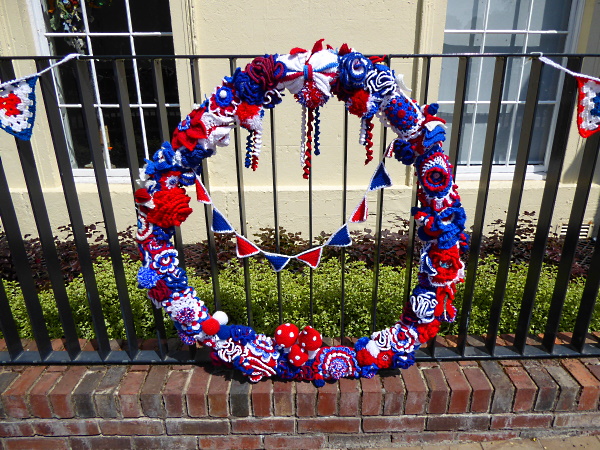
Some very knobbly trees caught our eyes. There were three or four of them, all with burrs protruding from the striated bark. They were leafing feebly, but looked like False Acacia Robinia pseudoacacia, native to the southern states of America, where they are known as Black Locust. Were they infected or infested with something? I asked on the Facebook tree experts group, and was told ” If the top dies back for any reason, the knobbly lumps will sprout new shoots to replace the canopy and keep the tree going. Survival adaptation. I am not sure that all Robinias do it, but a great many do.”
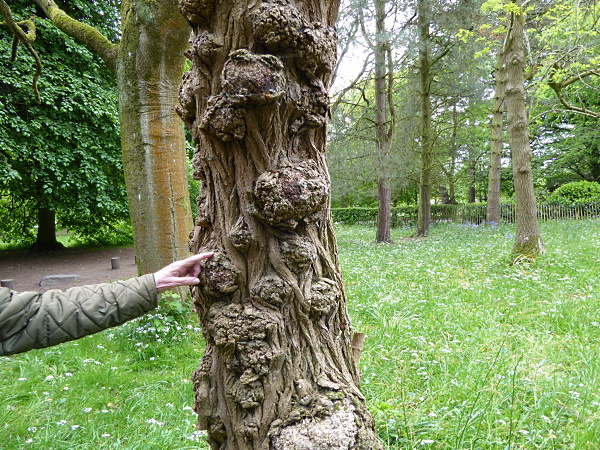
Near the Rhododendron walk is this Giant Sequoia. It looks old, but it was planted to commemorate Churchill’s funeral in 1965, so it is only 57 years old. What a whopper!
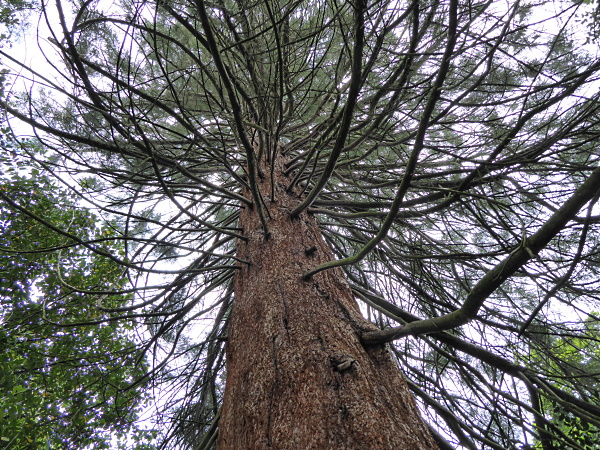
As we headed back to the bus we reflected that we hadn’t seen many birds. There were Crows, Magpies, Wood Pigeons, a couple of Robins and Blackbirds, but not even a Treecreeper today. I suppose that all those exotic alien trees, interesting as they are, won’t be supporting much in the way of native insects, so they provide very little food for birds. A comparably-sized area full of native trees would be alive with birds. The Nature Reserve ought to help out with that.
Public transport details: Bus 86 from Elliot Street at 9.58, arriving Mather Avenue / Ballantrae Road at 10.25. Returned from Mather Avenue / Storrsdale Road on bus 86 at 2.15, arriving city centre at 2.47.
